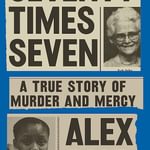

Offenders under the age of 18 are exempt from the death penalty. Developments in brain science have renewed debate about whether young adults should also be excluded.
Children are not as culpable as adults for their actions. In the death penalty context, that principle has caused debate about what age is too young for someone to be subject to execution. International human rights law has long prohibited the use of the death penalty against people who were younger than age 18 at the time of the offense. See Executions of Juveniles Outside of the U.S. In 2005, the U.S. Supreme Court brought the U.S. into compliance with that international norm, ruling that the U.S. Constitution also protects people from being sentenced to death for crimes committed when they were under 18. For more information, see the Roper v. Simmons Resource Page.
The Court had earlier (1987) held that the proper cutoff should be the age of 16, but states gradually applied more stringent standards to avoid conflict with other areas of the law where children were treated differently. By 2005, thirty states had either abolished the death penalty for all offenders or at least for those under the age of 18. As with its earlier ruling exempting defendants with intellectual disabilities, the Court found that a national consensus had formed around excluding those under 18, and that there was little to be gained in terms of deterrence or retribution by executing younger offenders. Some Justices pointed to the fact that the U.S. was virtually alone in the world in allowing juvenile offenders to be executed. The emerging science of brain development also contributed to this decision.
Debate has continued on whether even the age of 18 is too young to assume full adult accountability for a heinous crime. Some have suggested that 21 would be a more appropriate age both because of the rights and responsibilities conferred by society at that age and because new brain science shows that critical areas of the brain relating to judgment, thrill seeking, and consequential thinking do not mature until the mid-twenties. The Court’s ruling on the application of the death penalty to juveniles has spurred other decisions regarding the use of life-without-parole sentences for this same group.
DPIC has carefully monitored the flow of state legislation and court decisions regarding the appropriate age for the death penalty. The pertinent Supreme Court decision is fully analyzed. DPIC also makes available the thorough research by others on the use of the death penalty for juveniles in U.S. history, with statistics on sentences, executions, and the race of defendants.

The Aprajita Woman and Child (West Bengal Criminal Laws Amendment) Bill, which outlines the death penalty for rape resulting in the victim’s death or “ vegetative state,” was adopted by the West Bengal government in eastern India on September 3 , 2024 . Under international law, it is unlawful to prescribe the death penalty for a crime not meeting the “ most serious” crime (e.g., intentional murder)…
June 16 , 2024 , marks 80 years since South Carolina executed 14 -year-old George Stinney Jr. Historical reports indicate that on March 24 , 1944 , Mr. Stinney and his younger sister, Aime, were playing outside when two white girls approached them, asking where they could find a particular flower. Neither Mr. Stinney nor his sister knew where the young girls could find these flowers and they quickly moved along. That evening, when both young girls failed to return home, a search party was sent to…

Attorneys for Christa Pike, the only woman on Tennessee’s death row, filed a motion on August 30 to re-open her appeals based on a recent decision from the Tennessee Supreme Court. In 2022 , the Court ruled in State v. Booker that mandatory life sentences in homicide cases are unconstitutional when imposed on juveniles, drawing on U.S. Supreme Court precedent that held that juveniles are less mature, more vulnerable to peer pressure, and generally less culpable than adults. Ms. Pike’s…

Gary Tyler was just 16 years old when he was charged with shooting a white student in 1974 and sentenced to death, a crime that, many witnesses agree, he did not commit. Mr. Tyler, then a sophomore in high school in St. Charles Parish, Louisiana, was riding a school bus that was attacked by a segregationist mob. In the chaos, someone fired a shot that killed a 13 -year-old white boy, Timothy Weber. After Mr. Tyler, who is Black, spoke to one of the deputies, he was arrested for allegedly…

In Seventy Times Seven: A True Story of Murder and Mercy, author Alex Mar presents an in-depth account of a violent homicide and its impact on a racially divided community and the individuals involved. Mar not only discusses the fears associated with modern crime and punishment but also addresses the human capacity for compassion and forgiveness. In the prologue, Mar writes that “ this is a story that asks what any community is willing to accept as just consequences — as…

![]()
On September 2, 2014, Leon Brown and Henry McCollum were exonerated and released from prison in North Carolina. The two men, who are half brothers, had been convicted of the rape and murder of an 11-year-old girl and sentenced to death in 1984. Brown was 15 at the time of the crime and McCollum was 19.